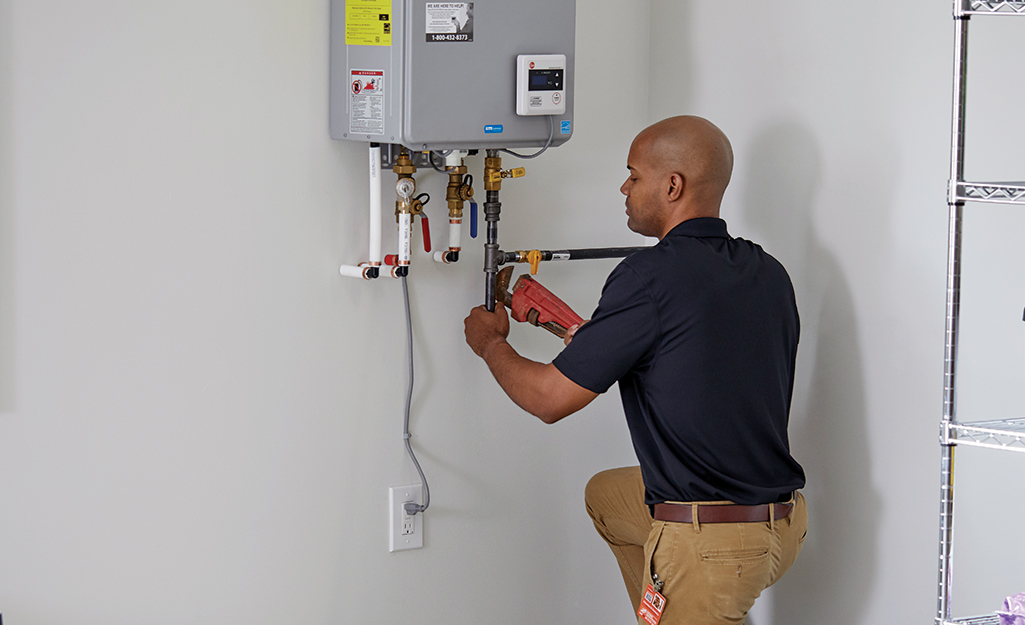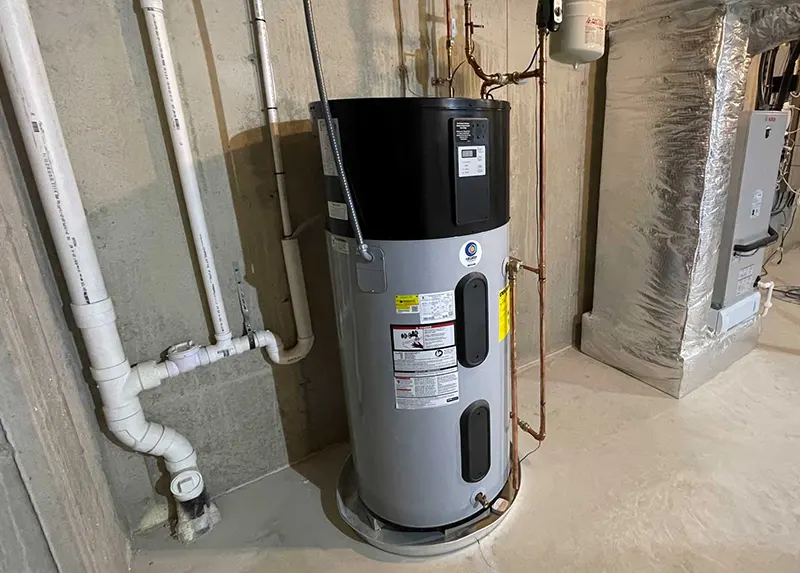Full Guide to Water Heating UnitInstallment and Replacement
Comprehending the details of hot water heater setup and substitute is critical for property owners looking for to make sure efficiency and reliability in their warm water supply. From selecting the proper kind and size to implementing a seamless installment procedure, numerous elements need to be taken into consideration to prevent typical mistakes. This overview will provide you with the needed steps and understandings to navigate the complexities of this home renovation task, while also stressing important maintenance techniques that can lengthen the life of your system. As you explore these facets, you might locate yourself reassessing your existing arrangement and identifying areas for renovation.
Sorts Of Water Heating Systems
When considering hot water heater installation and substitute, it is crucial to comprehend the various kinds of hot water heater readily available out there. One of the most usual kinds consist of container water heaters, tankless hot water heater, heatpump water heating systems, and solar hot water heater.
Storage tank water heating units are traditional systems that save a certain quantity of hot water, making them conveniently offered when required. In contrast, tankless water heating units supply warm water on demand, removing the need for storage.
Heatpump water heating units use electrical energy to move warm from the air or ground to warmth water, supplying considerable power savings but needing even more area and specific installation problems. Solar water heating units harness solar power to heat water, supplying an eco-friendly alternative with prospective lasting price financial savings, although they typically need a backup system for over cast days.
Recognizing these choices guarantees notified choices pertaining to setup and substitute, satisfying particular requirements and choices.
Picking the Right Size
Picking the proper size for a hot water heater is essential to make sure optimum efficiency and effectiveness. A device that is also small will battle to meet house needs, leading to irregular warm water availability and raised energy consumption. Alternatively, an extra-large hot water heater can lead to unnecessary power waste and higher energy expenses.
To figure out the ideal dimension, consider the house's top warm water usage. This can be determined based upon the number of passengers and their common warm water needs. A family members of 4 may call for a water heating system with a capability of 50 to 80 gallons, depending on the usage patterns, such as simultaneous showers and washing.
Additionally, examine the recuperation rate, which determines just how quickly a heating unit can restore hot water after it has been utilized. For tankless versions, focus on the flow rate, determined in gallons per min (GPM), to guarantee it meets the home's synchronised need.

Installation Process Review

Following, the old unit has to be separated and eliminated, taking care to adhere to regional codes and regulations relating to disposal. When the old unit is out, the brand-new water heater can be placed in position. This action includes attaching the water system lines, ensuring that all installations are leak-free and safe and secure.
After establishing water connections, it's necessary to link the power supply, whether electrical or gas, following the supplier's instructions meticulously. As soon as all connections are made, the system must be loaded with water, and the power can be turned back on. It's important to examine for leakages and guarantee the water heater is working appropriately prior to completing the installation process.
Usual Installation Errors

Another frequent error is disregarding to follow local codes and guidelines. Failing to adhere to these requirements can not just lead to safety and security hazards but may additionally result in pricey fines or the need for costly reinstallation.
Failing to protect connections or using the incorrect type of installations can lead to leakages and water damage. By preventing these common installment errors, property owners can ensure their water heating unit operates safely and successfully, making best use of performance and longevity.
Upkeep Tips for Longevity
Correct upkeep of a water heating unit is important for its long life and ideal performance. Routine examinations and maintenance can avoid pricey repair work and expand the home appliance's lifespan. Begin by checking the temperature level setting; it must generally be established between 120 ° F and 140 ° F for ideal power efficiency and safety and security.
Every six months, purge the tank to eliminate debris accumulation, which can impair home heating efficiency and trigger deterioration. To do this, turn off the heating unit, attach a pipe to the drainpipe valve, and allow the water run till it is clear.
Anode rods must be evaluated yearly and replaced when they are rusted. These rods help protect against storage tank rust by bring in destructive elements in the water.
Furthermore, inspect the pressure relief shutoff on a regular basis to ensure it is working appropriately. This shutoff is important for protecting against excessive pressure buildup within the storage tank.
Finally, take into consideration setting up a professional maintenance check every few years for extensive assessments and maintenance. By sticking to these upkeep pointers, home owners can significantly enhance the efficiency, safety, and lifespan of their hot water heater, ensuring dependable hot water for years to come.
Conclusion
In verdict, Check Out Your URL appropriate installment and maintenance of water heating systems are important for ensuring performance and longevity. By recognizing these important facets, property owners can attain a trustworthy hot water supply while lessening possible problems connected to water heater operation.
Recognizing the complexities of water heating system installation and replacement is critical for property owners looking for to make certain efficiency and dependability in their warm water supply.Tank water heating units are typical systems that store a particular volume of warm water, making them readily available when check out this site required. In comparison, tankless water heating systems provide hot water on need, removing the need for storage space. Selecting a water heating unit that is either as well tiny or also large can lead to ineffectiveness, resulting in insufficient warm water supply or too much power consumption.
By understanding these necessary facets, homeowners can achieve a trusted hot water supply while minimizing potential issues associated to water heating unit operation. plumber Denton.